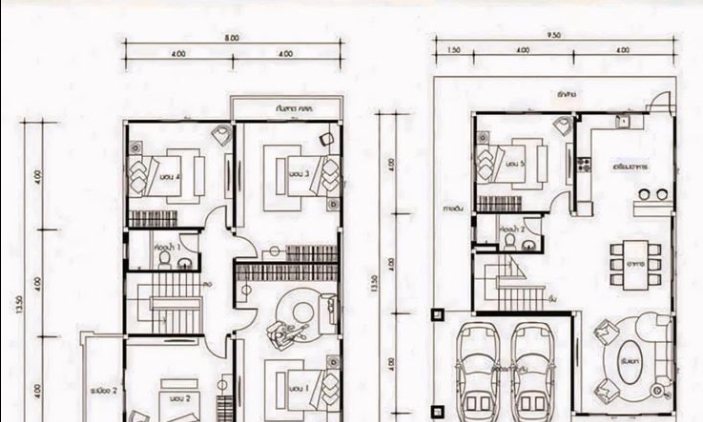How Wide is a Shipping Container? Understanding the Dimensions for Your Project
5 Min read
)
August 28, 2024
Shipping containers have become a versatile solution for more than just transporting goods across the globe. From storage units to innovative homes and offices, these containers are used in a variety of creative ways. But when planning a project that involves shipping containers, one of the first questions that comes up is: how wide is a shipping container? Understanding the standard dimensions of a shipping container is crucial for ensuring it fits your specific needs.
Standard Width of a Shipping Container
The standard width of a shipping container is consistently 8 feet (2.44 meters) across all types, including standard, high-cube, and those with varying lengths such as 20 feet, 40 feet, and 45 feet. This uniformity in width is a global standard, which facilitates the seamless stacking, transportation, and integration of containers in various logistics and construction applications. The consistency of the 8-foot width also simplifies the design of infrastructure, such as container ships, trucks, and storage facilities, that handle these containers. Inside the container, the usable interior width is slightly less, typically around 7 feet 8 inches (2.33 meters), due to the thickness of the container walls. This slight reduction in interior space is an important consideration for cargo loading and space planning. The standardized width is a crucial factor in the container's versatility, making it an ideal solution for a wide range of industries worldwide.
Common Types of Shipping Containers and Their Width
To give you a more complete picture, here’s a quick overview of common shipping container types and their widths:
Standard 20-Foot Container
Ideal for smaller storage needs, construction site offices, or as a modular building block for container homes. The 20-foot container is one of the most versatile and commonly used containers due to its manageable size, which makes it easier to transport and deploy in various settings. Its compact dimensions allow it to fit in tight spaces, making it an excellent choice for urban environments where space is at a premium. Despite its smaller size, it still offers ample room for a variety of uses, from secure storage to the creation of compact living or working spaces. This container is frequently utilized in both temporary setups and permanent installations, offering flexibility in how it can be repurposed or combined with other containers.
Exterior Width: 8 feet (2.44 meters)
Interior Width: Approximately 7 feet 8 inches (2.33 meters)
Standard 40-Foot Container
Commonly used for larger storage solutions, transportation of goods, and in construction projects requiring larger modules. The 40-foot container is twice the length of the 20-foot container, making it ideal for situations where more space is required without sacrificing the ease of use provided by the standard width. This container is widely favored in global shipping due to its ability to carry larger volumes of goods efficiently, making it a staple in international logistics. In construction, the 40-foot container serves as a robust and cost-effective building block for larger modular structures, providing the necessary space for more complex layouts and designs. Its standard dimensions ensure that it can be seamlessly integrated into existing infrastructure, whether for shipping, storage, or construction purposes.
Exterior Width: 8 feet (2.44 meters)
Interior Width: Approximately 7 feet 8 inches (2.33 meters)
High-Cube 40-Foot Container
Similar to the standard 40-foot container but with an additional foot in height, making it ideal for taller equipment or additional headroom in container-based structures. The high-cube version of the 40-foot container provides the same length and width as the standard model but offers an extra foot in height, increasing the container's internal volume. This added height is particularly beneficial in applications where vertical space is crucial, such as when storing large or tall items, or when creating more comfortable living or working spaces within container homes or offices. The high-cube container is often selected for projects that require more headroom, whether for aesthetic reasons or practical needs, such as workshops or storage facilities. Its compatibility with standard containers and ease of transport make it a popular choice for those looking to maximize space without altering the container’s footprint.
Exterior Width: 8 feet (2.44 meters)
Interior Width: Approximately 7 feet 8 inches (2.33 meters)
45-Foot Container
Offers extra length while maintaining the standard width, perfect for larger or more complex builds like multi-room container homes or spacious storage units. The 45-foot container extends the length beyond that of the standard 40-foot container, providing additional space for more ambitious projects. This extra length is ideal for constructing larger modular buildings, such as multi-room container homes, commercial spaces, or expansive storage units, where the need for increased floor space is essential. Despite its greater length, the 45-foot container retains the standard 8-foot width, ensuring it can still be easily stacked, transported, and integrated with other containers in global logistics. This balance of additional space with standard dimensions makes the 45-foot container a versatile and highly functional option for complex construction and storage projects.
Exterior Width: 8 feet (2.44 meters)
Interior Width: Approximately 7 feet 8 inches (2.33 meters)
Understanding the standard width of a shipping container is a fundamental step in planning any project that involves these versatile structures. The 8-foot width is a global standard, ensuring that containers are both uniform and adaptable for a wide range of applications. Whether you’re transporting goods, building a container home, or setting up a temporary office, knowing the precise dimensions helps you make informed decisions and optimize your design.
For more insights into using shipping containers in construction and design, explore our Boom & Bucket blog. We offer expert advice and inspiration to help you turn these steel boxes into functional, stylish, and sustainable spaces.

Mike Kennedy is Boom & Bucket's Marketplace Operations Manager, where he leads shipping, warranties, and post-sale operations to create a seamless buyer experience. As one of the company's earliest team members, Mike helped build the foundation of Boom & Bucket's operations and guided its growth through acquisition by RB Global. He is passionate about scaling marketplaces, solving operational challenges, and improving efficiency to deliver industry-leading results.














